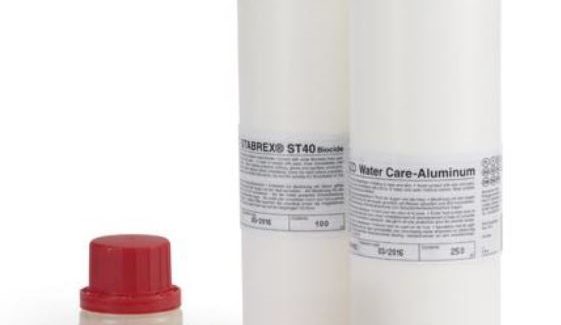Keeping it Cool: Why Machines Depend on Chillers, and Chillers Depend on You
Lax water maintenance has a huge potential downside in laser cutting machines: bad water could lead to extreme overheating and complete failure of the laser. Here are some other reasons why keeping cool and remembering to change the chiller water will get the most work out of your machinery at the lowest cost of ownership.
Posted: September 21, 2018
Any mechanic worth his salt knows that basic maintenance is the key to keeping a machine running properly over the long-term. Seemingly minor points, like wiping away dust and applying lubrication to a rail, can ultimately mean the difference between costly failure and worry-free operation. Even the most sophisticated CNC machines depend heavily on the most simple of preventative maintenance tasks. One machine checkpoint that falls under the heading of “Extremely Important, but Often Forgotten” is chiller water maintenance. Many machine tools with large drive motors or signal amplifiers draw lots of electrical current and generate a lot of heat during operation, creating a requirement for good liquid cooling. Laser cutting machines are an extreme example of this because the laser source attached to the machine – regardless of whether it’s based on CO2 or solid state technology – will require copious heat transfer capacity to operate smoothly. Cooling water is the lifeblood of a laser, and a problem with water is just as bad for a laser as a heart problem is for a person.
In industrial operations where significant heat sources need to be managed, enter the chiller unit. These devices come in various sizes, depending on the heat load they must deal with, from as small as a traveler’s roller-bag to as large as a small building. Most machinery that requires liquid cooling includes a chiller unit that is properly sized to handle the heat the equipment is expected to generate, but some machines may be delivered to an end-user with only the plumbing for the liquid cooling, not the chiller unit itself: In these situations, the user is expected to provide a chiller to connect to the equipment. While some factories have central water cooling systems capable of cycling water through many machines, the most common setup by far is to have a discrete chiller unit at each machine that requires one – and every one of those chillers on that factory floor requires regular water maintenance.
Some fundamentals of industrial liquid cooling apply broadly across machine makes and models, while other details of chiller maintenance must be checked on a case-by-case basis. A good place to start understanding the needs of a specific machine is by understanding the chiller water itself. In the case of these systems, a barrel full of tap water is not going do the job. Most chiller units call for deionized or demineralized water, and with good reason. Ordinary tap water, and even water that has been filtered or distilled, will have a certain percentage of contamination by mineral and biological material. Mineral deposits can build up inside cooling systems the way plaque builds up in arteries, reducing the heat transfer efficiency at cooling points and reducing overall water flow through the system. Biological agents, such as algae, impair water cooling in the same way if they are allowed to grow inside the cooling circuit.
Deionization and demineralization processes remove more contaminants than typical distilling and filtering processes used to make drinking water, and that level of purity helps ensure the water circuit remains clear and heat is being optimally eliminated. Equally as important as purity, removing mineral content from the water reduces its conductivity, which in turn reduces the corrosive effect of the water on the metal components it comes into contact with. Most chiller suppliers specify an upper-limit for conductivity of the cooling water in order to prevent corrosion, and these conductivity limits can usually only be met by water that has been deionized, demineralized, or both. Even though we are filling the chiller up with high quality water, that in itself is still not usually enough to keep our cooling circuits happy. Even thoroughly demineralized, pH neutral water can cause corrosion of exposed metal, and odds are very high that our chiller circuit requires the cooling water to constantly contact metal components.
For this reason, many cooling equipment suppliers recommend adding an anti-corrosive agent to the water. While there are many products that can do this job, careful attention should be paid to the specific chemicals recommended by the equipment manufacturer. The composition of the parts in the cooling circuit (whether they are primarily aluminum or copper, for example) may make it very important that a specific anti-corrosive chemical is used exclusively. Another common additive in cooling water circuits is a disinfectant or algaecide type of chemical to inhibit biological growth. A tiny contamination can rapidly lead to serious equipment damage if it spreads out of control through the cooling water circuit. That’s a potentially expensive repair bill that can be entirely avoided by paying attention to correct water maintenance.
Chiller water as a maintenance checkpoint tends to occur at infrequent intervals: Most cooling systems call for cleaning and flushing the system and replacing water and additives every six or 12 months. The cleaning, flushing and filling procedure may take a few hours of unwanted machine downtime to perform, but this is one of those tasks that you cannot let slide. After a certain period of time, the additives in the cooling water will break down, and the protection they provide against corrosion and biological contamination starts fading. If this situation is allowed to persist for a few months before tackling the water change, some damage could already have taken place inside the cooling circuit. Because this damage occurs inside the cooling circuit, it might not be obvious for a long time – but it shaves useful life off the hardware . . . and all because of the relatively minor effort and cost required for the water change.
The potential downside to lax water maintenance can be huge: Using laser cutting machines again as an example, in some cases bad water can lead to extreme overheating and complete failure of the laser source – that’s about as expensive a Monday morning emergency as a shop can have. So if you want to get the most work out of your machinery at the lowest cost of ownership, keep cool and remember to change the chiller water.


















